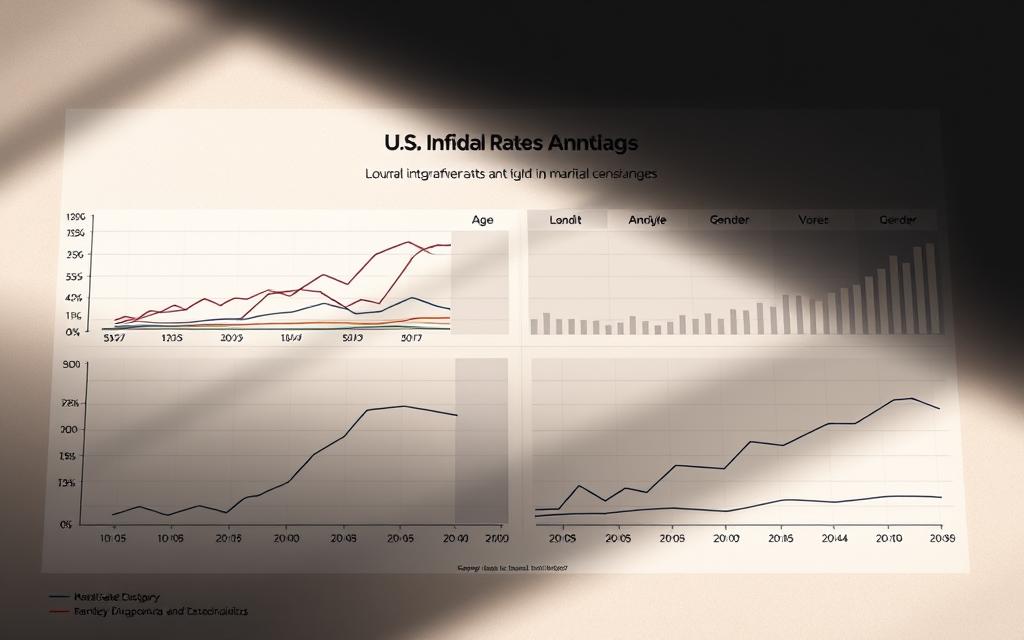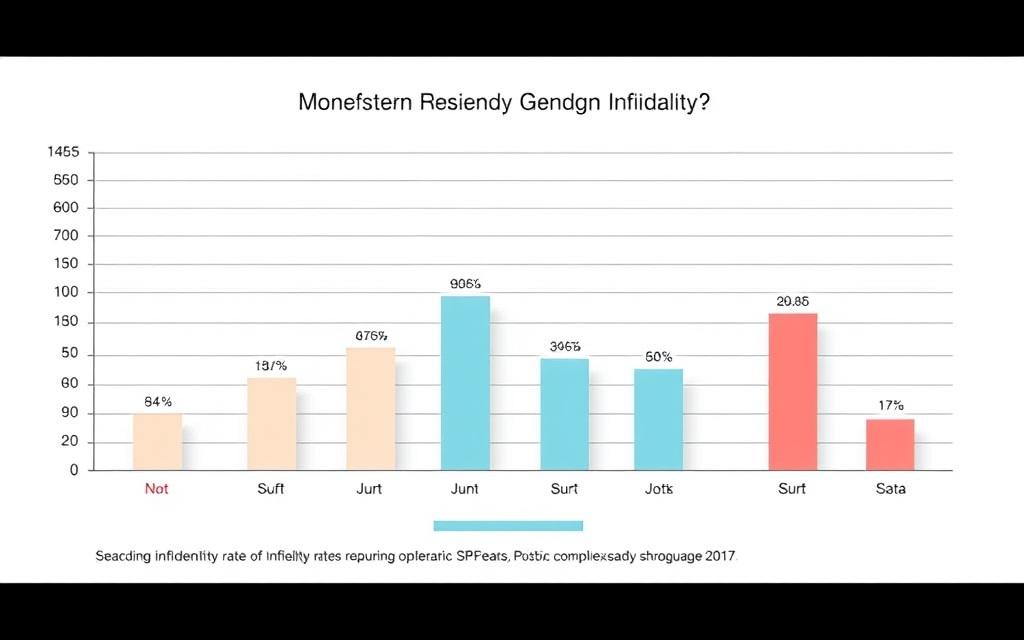Infidelity remains one of the most sensitive yet widely discussed topics in modern relationships. While trust forms the foundation of partnerships, curiosity about gender differences in cheating persists. Research from institutions like the Institute for Family Studies reveals that extramarital affairs impact millions of marriages annually, making this a critical conversation for couples.
Data from the General Social Survey highlights a notable gap: approximately 20% of married individuals admit to straying, with men reporting higher rates than women. Techopedia’s analysis aligns, showing 20% of men and 13% of women engage in extramarital sex. These numbers, while sobering, offer insight into behavioral patterns across genders.
Why does this matter? Understanding demographics of infidelity helps partners address vulnerabilities in their relationships. Affairs often stem from emotional gaps, communication breakdowns, or unmet needs—issues that can be navigated with honesty and effort.
This article explores cheating statistics, societal influences, and strategies for fostering trust. Whether you’re seeking clarity or ways to strengthen your bond, we’ll break down the facts without judgment. Let’s dive in.
Understanding Infidelity Trends in US Marriages
Data from national surveys paints a vivid picture of how extramarital affairs shape American relationships. About 25% of marriages report at least one instance of betrayal, according to the Institute for Family Studies. These self-reported figures, while imperfect, reveal patterns that help couples recognize risks.

Overview of Key Statistics from National Surveys
The General Social Survey offers critical insights: 20% of married individuals admit to cheating, with men outpacing women (20% vs. 13%). Younger adults aged 18–29 show a narrower gap, sometimes even reversing in recent studies. After 30, however, the disparity grows sharply.
Examining Age and Gender Variations
Men’s infidelity rates peak in their 50s, while women’s remain steadier across age groups. For example:
- 15% of men under 30 admit to cheating vs. 12% of women
- By age 55, male rates climb to 22%, compared to 14% for women
These shifts highlight how life stages influence relationship dynamics. Emotional needs and opportunities often evolve with age, affecting choices.
who cheats more men or women
Unpacking the numbers behind broken vows shows distinct trends. Research consistently reveals men report extramarital sex more frequently than women. The Institute for Family Studies found 20% of married males admit to cheating, compared to 13% of females. But these figures only tell part of the story.

Research Insights and Self-Reported Figures
Self-disclosure in surveys faces challenges. Relationship expert Briony Leo notes people often underreport sensitive behaviors due to shame. Younger adults aged 18–29 sometimes show near-equal rates, with studies occasionally showing women initiating affairs first in this group. Techopedia’s analysis confirms this temporary parity before the gap widens with age.
Why the Discrepancy Persists
Three factors influence higher male infidelity rates:
- Social expectations: Cultural narratives sometimes normalize male promiscuity
- Opportunity: Men historically report more workplace chances for affairs
- Reporting bias: Women may define emotional connections as cheating more often
These nuances matter when confronting a cheating spouse. While statistics guide understanding, every relationship has unique dynamics. Data helps identify patterns, but healing requires personalized approaches.
Exploring the Reasons Behind Infidelity
Understanding why people stray requires looking beyond surface-level judgments. Both emotional voids and physical desires often intertwine, creating a perfect storm for infidelity. Let’s unpack what fuels these choices and how they differ across genders.

Emotional and Physical Motivations
Emotional neglect ranks high among reasons for affairs. The Relish Relationship Report found 68% of individuals seeking extramarital sex cited feeling unappreciated. Low self-esteem also plays a role—partners may seek validation elsewhere when their marriage lacks affirmation.
Sexual dissatisfaction drives physical motivations. A 2022 study in the Journal of Social Psychology revealed 43% of unfaithful men and 35% of women blamed unmet intimate needs. Men often frame affairs as “just physical,” while women more frequently link them to emotional gaps.
Three key catalysts emerge from research:
- Long-term communication breakdowns
- Unresolved resentment over time
- Craving novelty after years of routine
These factors rarely act alone. Emotional disconnection often lowers inhibitions toward physical betrayal. Couples facing these challenges benefit from proactive dialogue—addressing needs before resentment builds.
Demographic Insights and Shifting Social Trends
Infidelity patterns aren’t random—they’re deeply tied to social and cultural factors. The Institute for Family Studies highlights how race, education, and upbringing shape cheating statistics. For example, Black adults report higher rates of extramarital affairs compared to other racial groups, according to the General Social Survey. Meanwhile, growing up in an intact family reduces the likelihood of straying later in life.
Impact of Race, Education, and Family Background
Demographic differences reveal surprising trends. While higher education levels show no direct link to infidelity, family stability matters. Adults raised in two-parent households are 30% less likely to cheat than those from divorced homes. Economic factors also play a role—financial stress doubles the risk of affairs in low-income marriages.
Political Identity and Religious Influences
Political and religious values strongly correlate with fidelity. Conservatives are 40% less likely to cheat than progressives, per recent studies. Regular religious attendees report lower infidelity rates, likely due to community accountability. However, these trends are shifting—younger generations show smaller gaps between political groups.
Three key shifts in social attitudes stand out:
- Acceptance of extramarital sex rose from 12% to 24% since 1991
- Urban couples face higher cheating risks than rural pairs
- Non-religious partners are twice as likely to stray
These insights help couples understand broader pressures while navigating their unique relationships. Recognizing these patterns creates opportunities for proactive trust-building.
The Role of Modern Society and Technology in Cheating
Digital devices have quietly reshaped how connections form—and fracture—in modern partnerships. Where once affairs required physical meetings, apps and social platforms now offer discreet pathways to betrayal. Studies show technology triples the likelihood of emotional or physical infidelity, creating a minefield for trust in relationships.

How the Internet and Social Media Facilitate Infidelity
Smartphones and dating apps like Tinder blur boundaries between innocent chats and risky behavior. A 2023 report found 45% of couples affected by cheating traced it to online interactions. Secret messaging apps, burner accounts, and location-hiding features make it easier than ever to hide a double life.
Emotional affairs often start innocently. A “harmless” DM exchange can spiral into secrecy, especially when platforms like Instagram or Facebook allow reconnections with past flames. Research from relationship experts reveals 34% of spouses admit to sexting—a gateway to physical encounters.
Three key factors amplify risks:
- 24/7 access to potential affair partners
- Anonymity lowering inhibitions
- Normalized flirting in digital spaces
While men historically initiated more physical affairs, women now report comparable rates of online emotional entanglements. Partners who prioritize preventive strategies, like shared device transparency, build stronger buffers against these threats.
The digital age hasn’t created new desires—it’s just made acting on them effortless. Recognizing these pitfalls helps couples set healthier boundaries before screens become shields for deception.
Healing and Rebuilding After an Affair
Rebuilding a relationship after betrayal feels daunting, but countless couples prove it’s possible with dedication. Studies like the Relish Relationship Report outline four recovery stages: revelation, initial reactions, stabilization, and revitalization. Each phase requires patience and teamwork to transform pain into growth.

Steps to Recovery and Reconnection
Honesty anchors the healing process. Start with open conversations about needs and boundaries. Texas Tech University research shows structured approaches work best:
- Full disclosure about the affair to rebuild transparency
- Joint counseling sessions to address emotional wounds
- Shared accountability measures, like device access
Both partners must commit to change. Women often prioritize emotional repair, while men focus on practical fixes—bridging these perspectives strengthens progress.
The Importance of Counseling and Open Communication
Therapy provides tools to navigate triggers and rebuild intimacy. Over 60% of couples who attend counseling report stronger bonds post-crisis. Forgiveness isn’t instant—it grows through consistent actions like:
- Re-establishing daily connection rituals
- Validating each other’s pain without defensiveness
- Celebrating small milestones in rebuilding trust
While infidelity reshapes relationships, many emerge more resilient. Focus on progress, not perfection, and let time reveal new layers of partnership.
Conclusion
Research confirms that 20% of married individuals admit to extramarital encounters, with gender differences narrowing among younger adults. Factors like emotional gaps and digital temptations amplify risks, yet over 60% of couples rebuild trust through counseling. Understanding these patterns helps partners address vulnerabilities before they escalate.
Demographics reveal surprising trends—urban couples face higher infidelity rates, while shared values in faith or politics often strengthen commitments. Recovery isn’t about perfection but progress. Open dialogue and professional guidance turn crises into opportunities for growth.
Every relationship faces challenges. By prioritizing transparency and mutual effort, men and women can navigate storms and emerge stronger. If betrayal has shaken your partnership, remember: knowledge and empathy light the path forward.
